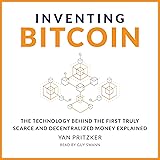Navigating the unpredictable currents of the digital asset ocean can often feel like being caught in a swirling vortex. One day, the market is awash with optimism and surging prices; the next, a pervasive stillness takes hold, leaving investors to ponder the next move. It is in these moments of apparent stagnation that discerning insights become invaluable. The accompanying video offers a concise summary of Raoul Pal’s recent thoughts, providing a lens through which to view the current state and future Bitcoin predictions, along with the broader digital asset landscape.
For those already immersed in the cryptocurrency world, Raoul Pal’s analysis serves as a guiding star. His commentary, originally shared across his Twitter account, delves into the nuances of market behavior, distinguishing between mere noise and genuine underlying trends. His perspective, as a seasoned former hedge fund manager, often cuts through the immediate volatility to reveal deeper, structural shifts at play.
Unpacking Bitcoin’s Sluggish Performance
A central theme of Raoul Pal’s observations revolves around the perceived sluggishness in Bitcoin’s price action. It is asserted that this subdued performance is a direct consequence of several interconnected factors. Analysis of transaction volumes and active wallet addresses reveals a concerning plateau.
Specifically, Bitcoin transaction volumes, which had experienced a significant surge in 2020, have largely been stagnant. Similarly, the number of active wallet addresses has not seen substantial growth throughout the year. This suggests that the retail activity that fueled much of the early 2021 rally has notably receded.
Further examination indicates that while institutional involvement, measured by wallets holding over $10 million, is incrementally rising, the overall numbers remain relatively small. It is also observed that many larger investors had liquidated their positions, particularly from May 2021 onwards, and have been slow to re-enter the market with significant capital. This lack of robust participation from both retail and substantial institutional players collectively contributes to the muted price movements currently witnessed.
Metcalfe’s Law and Network Effects
The concept of Metcalfe’s Law is often invoked when discussing network-based assets like Bitcoin. This law suggests that the value of a telecommunications network is proportional to the square of the number of connected users of the system. In the context of digital assets, it implies that as the network grows—through increasing active users and transaction volumes—its inherent value should also escalate.
Conversely, if transaction volumes and active wallet addresses remain flat, it can be deduced that the network’s growth has slowed. This inertia is then mirrored in the price, creating a direct correlation between network expansion and asset valuation. Therefore, the current stagnation in key network metrics logically explains the subdued price action of Bitcoin, as the network is perceived as not growing at the pace expected for significant value appreciation.
Ethereum’s Resilient Outperformance
In stark contrast to Bitcoin’s recent trajectory, Ethereum has demonstrated remarkable resilience and outperformance. It is important to acknowledge that Ethereum, while also subject to the broader market dynamics, benefits from a different set of catalysts. These include its extensive utility in decentralized finance (DeFi) and non-fungible tokens (NFTs), which have created a stronger narrative and sustained demand.
While active addresses have also seen stagnation in Ethereum, overall volumes have remained elevated due to these burgeoning ecosystems. A key differentiating factor for Ethereum is its economic model, which incorporates both token burning and staking. The burning mechanism, where a portion of transaction fees is permanently removed from circulation, coupled with the locking up of ETH for staking purposes, effectively reduces the available supply. This constrained supply, when combined with maintained demand from DeFi and NFTs, has allowed Ethereum to outperform Bitcoin significantly, at one point achieving a 4x outperformance in 2021.
Navigating the Broader Digital Asset Market
The digital asset space is far from static; instead, it is characterized by rapid rotations of capital. With no substantial net new capital flowing into the market, attention has been observed to shift towards other blockchain protocols, particularly Layer 1s (L1s). These L1s often feature similar Proof-of-Stake (PoS) mechanisms to Ethereum, complete with burning and staking dynamics.
However, the crucial distinction lies in their smaller market caps and earlier stages of network adoption. This combination allows for more explosive price action when volume picks up, as the relative impact of new capital is much greater. This environment has led to a “sideways market” overall, characterized by a great deal of churn as existing investors reallocate assets in pursuit of higher returns across DeFi, NFTs, and various L1s.
These rotations are a natural consequence of the market’s broadening scope. As the landscape becomes more diverse, identifying projects with genuine traction becomes increasingly challenging. The market is seen as constantly sifting through new projects, awarding explosive gains to those that quickly establish strong network effects, but these periods of rapid appreciation are often short-lived.
Macroeconomic Headwinds and Crypto Activity
Beyond the internal dynamics of the crypto market, broader macroeconomic factors are also exerting significant influence. It is posited that a primary reason for reduced retail activity in the digital asset space is the widening gap between rising consumer price index (CPI) and stagnant wages. When the cost of living increases dramatically without a commensurate rise in income, the disposable income available for speculative investments, such as crypto, naturally diminishes.
This economic squeeze effectively removes the “marginal investor” from the market. Given that a significant portion of crypto adoption in previous cycles was driven by retail enthusiasm, this economic headwind represents a considerable barrier to network growth. Unless there is a shift towards stable economic growth and lower inflation, a reliance on institutional capital becomes even more pronounced.
Furthermore, regulatory uncertainty is frequently cited as another deterrent for institutional investors. Many potential entrants express apprehension regarding potential governmental changes to how digital assets are owned, sold, and purchased. This fear often drives institutions towards larger, more established protocols or towards venture capital allocations, where regulatory exposure can be perceived as more manageable, thereby keeping them out of the broader and more volatile market segments.
The Fed Balance Sheet Connection
The macroeconomic influence also extends to the actions of central banks, specifically the Federal Reserve. The Fed’s balance sheet expansion has historically been a significant driver of asset prices, including digital assets. It has been observed that digital asset markets tended to peak when the year-over-year rate of change in the Fed’s balance sheet expansion also peaked. This correlation underscores the impact of global liquidity on risk assets.
When the Fed engages in quantitative easing, injecting liquidity into the financial system, this capital often flows into various asset classes, including cryptocurrencies. Conversely, when the balance sheet contracts or the pace of expansion slows, a tightening of liquidity can lead to downward pressure on asset prices. Understanding this interplay between monetary policy and asset valuations is crucial for anyone attempting to make informed Bitcoin predictions.
The Long-Term Vision for Bitcoin and Digital Assets
In light of these complex market conditions, a key piece of advice, attributed to Paul Tudor Jones, resonates strongly: investors should align their investment time horizon with their idea time horizon. If an investment thesis, especially for digital assets, is based on principles like Metcalfe’s Law and network effects, then a multi-year perspective is essential, not one measured in weeks or months.
It is firmly believed that new capital will eventually flow into the space, ushering in a broader rally. This rally, when it arrives, is expected to attract both a resurgence of retail investors and a “reflexive loop” of institutional investors, driven by the fear of missing out (FOMO). Such a day is anticipated, and preparedness involves not over-extending oneself or utilizing excessive leverage, but rather HODLing (holding on for dear life) a diversified mix of quality assets.
The overarching trend indicates that the digital asset space continues to grow immensely, with an ever-expanding array of use cases. While new money is indeed needed to significantly boost the market caps of larger tokens, the entire ecosystem is deepening and diversifying. This expansion, over time, will prove immensely beneficial for those willing to embrace the “long game,” as patiently holding positions in core quality assets is seen as the optimal strategy to generate substantial returns when the market eventually experiences its next major upswing. For those seeking clarity amidst volatility, understanding Raoul Pal’s comprehensive Bitcoin predictions and strategic outlook is an invaluable asset.







